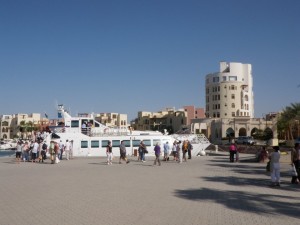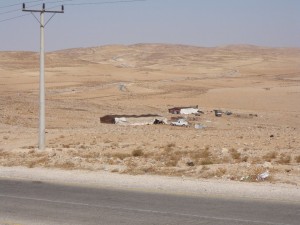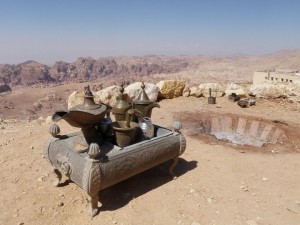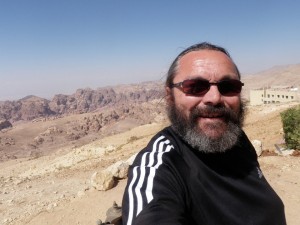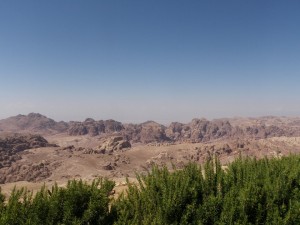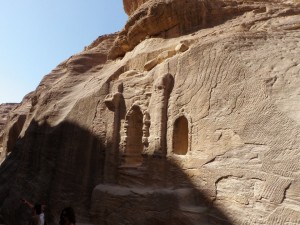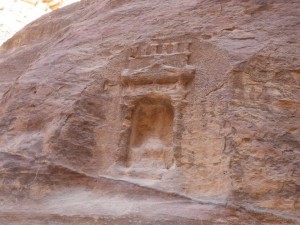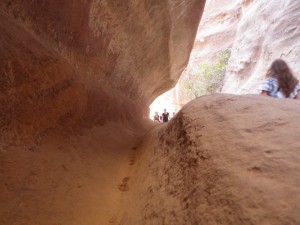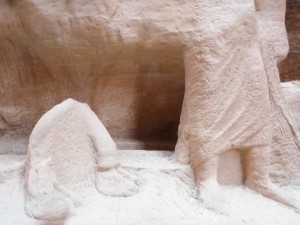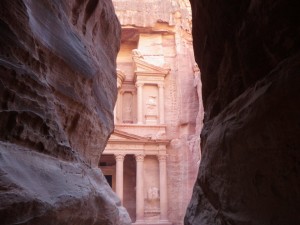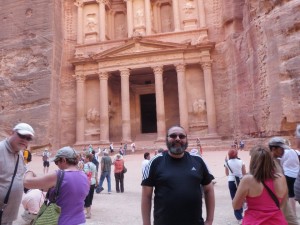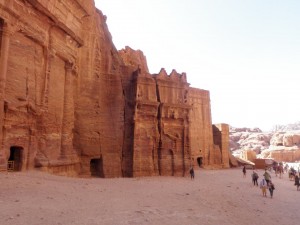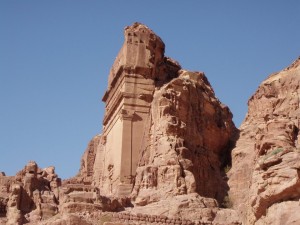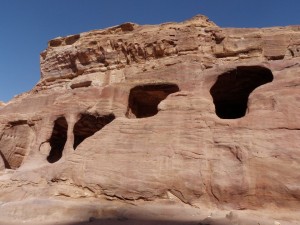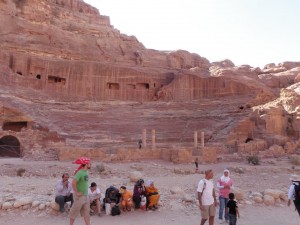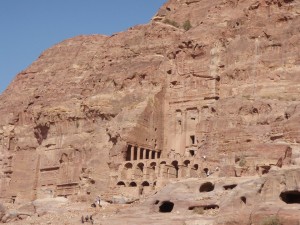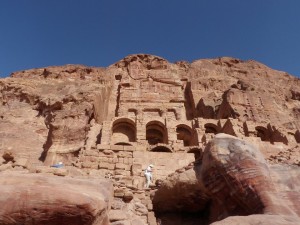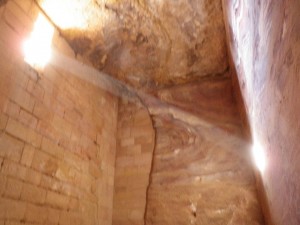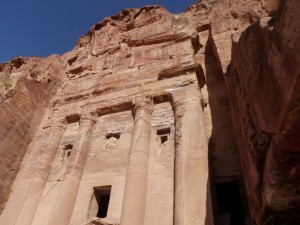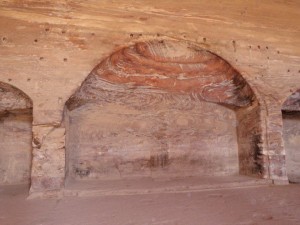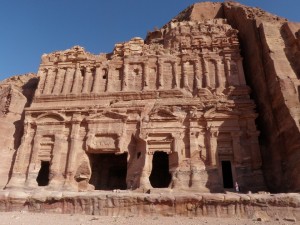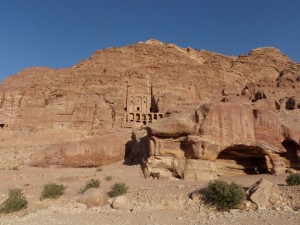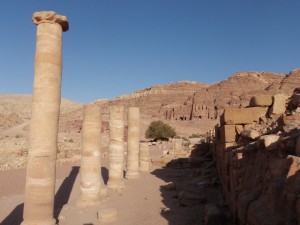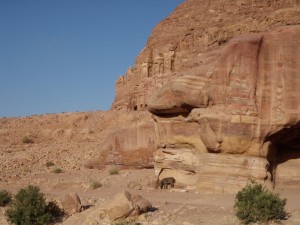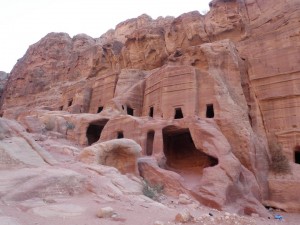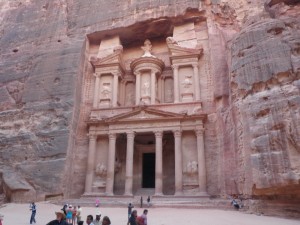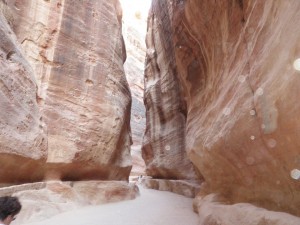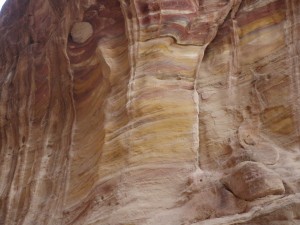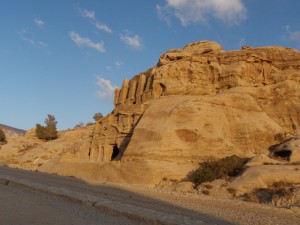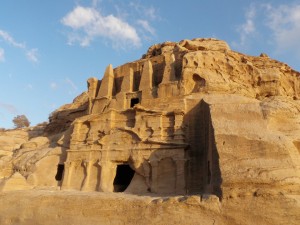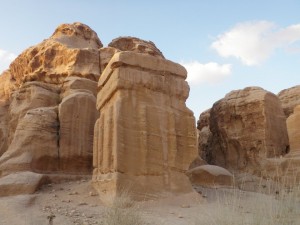The day is done and the beers are in so it’s time for an update from my few days in Dahab and Jordan. At Mayfair the evening after the pyramid jaunt I ran into Ahmed who I met last year. He showed me some of Cairo’s more interesting nightlife last year so I returned the favour by booking my Dahab travel through his fledgling agency.
So the next night I flew to Sharm el Sheikh on the Sinai Coast and was picked up by Hassan, the insanely grinning qat-chewing taxi driver for the 80km drive up the coast to Dahab. Apart from giving a cat a bit of a scare the drive was uneventful and swift and within an hour I was happily sleeping in my room in Dahab. And apart from occasionally shifting from my bed to the piles of cushions by the Red Sea, that’s where I stayed for the next day.
Thoroughly rested, I set out at 4 the next morning to catch the bus to Taba to catch the ferry to Aqaba in Jordan. Border formalities out of the way I got on the bus to Petra. On the way we passed many Bedouin settlements. While they mostly have a couple of pickups hanging around, each camp had a healthy herd of camels grazing nearby.
We stopped at a fancy hotel for lunch, after which I wandered outside to check the scenery and the hotel’s “Bedouin Camp” outside.
Back on the bus to wind down the hill into Wadi Musa the town above Petra. It was here that the Bedouin were forcibly removed to in 1985 when the Jordanian government decided they were getting in the way of the tourist dollar. I can’t help thinking the site may have been more interesting had the Bedouins been allowed to remain so you could see the caves actually being lived in. All in the past of course.
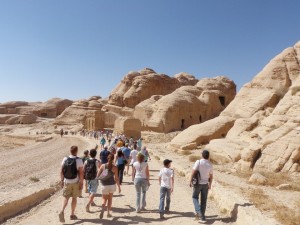
The path down to Petra follows the Siq or gorge down into the vsalley. I and several thousand other tourists were snapping our way down the path. Almost immediately you come across room size tomb buildings. Then you come to the start of the Siq proper and the
As soon as you are enclosed within the Siq walls the temperature drops dramatically as if you have entered an air-conditioned room and you can straight away see what made this place so attractive to the Nabateans who had made their way up here through Saudi Arabia. The further in you go, the higher the density of caves, statues and niches carved into the colourful sandstone walls.
Along both sides of the Siq at about waist height run water channels that were carved both to protect the city from floods and to provide the city with water. In some places higher up the wall you can see the crumbling remains of a second secret channel which supplied water when the city was beseiged and the attackers cut of the lower channels.
The thing that struck me about the place at this point is how good a climber the average Nabatean must have been. At that point in my head they became the Nabatean Monkey Men and my imagination soon had them scrambling up the cliff faces into their caves or hanging from one arm while they carved new sculpures into the coloured rock.
Sadly the iconoclasts have been as busy here as they have throughout the Middle East and sculptures featuring men or animals had been destrtoyed or defaced, but in what remains you can see the detail of the carving. Talented monkey men.
And then around the corner I came across the treasury, Monkey man magic!
You can see the steps they carved to get to the top and then start carving down. The influences are Greek, Roman, Egyptian and of course Nabatean and reflect the many cultures they traded with. Trade-savvy monkey men.
I came back to it when the sun was kinder and the crowds were smaller so there may be another photo or two of the Treasury later on. The Treasury may be the most famous and best restored monument but the work of the monkey men was only beginning to reveal itself. Around the corner again you come in to the city proper, passing noble monkey men’s houses.
The main city area is littered with the common monkey men’s caves. There are 5,000 of these and they held a population which exceeded 30,000. Not bad for 2,400 years ago. Industrious monkey men.
Of course when you have that many monkley men, you need somewhere to get them all together for entertainment and animal sacrifice and such forth. So of course you carve that out of the mountainside as well. The ampitheatre held 5,000 people. The columns and stage at the base were added by the Romans when they took over the city. I can only imagine the caves at the top were corporate boxes.
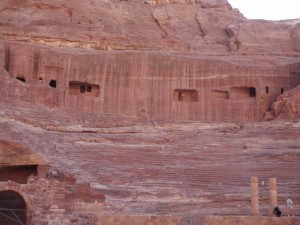
When you get up close to the caves you see how colourful the patterns in the stone are.
Next up I came across a series of massive structures on the opposite wall. These structures were embellished with columns and arches by the Romans. Time to climb up for a closer look. The next series of photos is all from this section.
Moving on from here you come to the “Roman” section of *etra, still mostly made by the Nabateans but with more Roman additions.
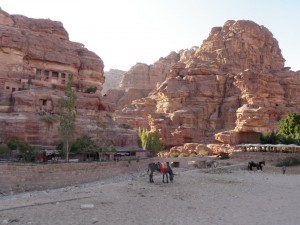
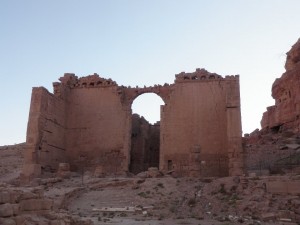
I declined to climb the 1000 steps to get to the top of this section. Hey, I’m no monkey man and I’d been up since 3:30am, so I began the long walk back past everything. It was later in the day and the low sun cast completely different colours on everything. The following photos are from my leisurely stroll back up the canyon
Of course, just as I was on my way out the light got really good. But you can use Google images to get nice sunset pictures of the rest.
And there you have it. A lot of photos I know but I trimmed it down from the 300 I took that day. I’m going to leave it here in the interests of getting this published today. The next post will cover the day I spent at Wadi Rum and Aqaba and got my hair cut. In the meantime you can try and guess how short it is now. Congratulations if you got this far.
Until next time…
